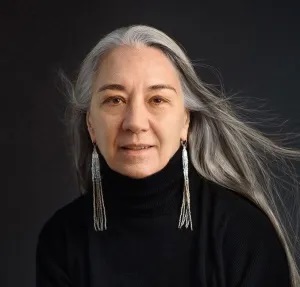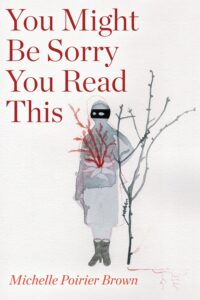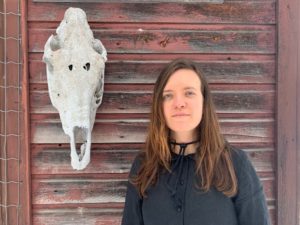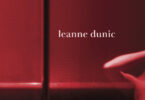Interview by Cara Nelissen
In connection with the annual Victoria Festival of Authors taking place October 11 to 15, 2023, Plenitude book reviews editor Cara Nelissen interviews Michelle Poirier Brown: a Cree Métis poet, performer and photographer living on unceded syilx territory in Vernon, BC. Michelle is the author of You Might Be Sorry You Read This (University of Alberta Press, 2022), “The Amnio Journal” (The Malahat Review, 2020), and the chapbook Intimacies (Jack Pine Press, 2022).
 Michelle has also published with Plenitude. Read her poem, “So Good,” from July 2020.
Michelle has also published with Plenitude. Read her poem, “So Good,” from July 2020.
You Might Be Sorry You Read This is a poetic memoir that looks unflinchingly at childhood trauma and coming to terms with a hidden Indigenous identity the poet discovered at age 38. The poems reveal how breaking silences and reconciling identity can refine anger into something both useful and beautiful.
Many of the poems in You Might be Sorry You Read This are an exploration of memory. In your poetic statement you write: “A poem is an exercise in bringing forward from the body the sense of a moment.” What is it about poetry as a medium that makes it particularly suitable for conveying the experience of a moment? How did you discover this?
I have a terrible time with narrative. One has to pick a beginning and an end and decide how much goes in the middle. I can never decide. But the moment. Everything is in the moment. The beginning and the middle and the end. It’s all one. Poetry is the hinge between the artist having that moment and the reader or listener having their own moment in the silence of the first breath after a poem. A poem is a medium that says, “here, have this.” It can do this because it is compact. Because it carries you, like a magic carpet, across meaning. Because its intent is fleeting.
Discovering that my writing took the moment as its subject was a matter of getting to know myself, of learning how to articulate how I experience the world.
 Some of your poems have very short lines and make use of empty space on the page, while others are closer to prose. How do you determine which style is right for a particular poem?
Some of your poems have very short lines and make use of empty space on the page, while others are closer to prose. How do you determine which style is right for a particular poem?
Betsy Warland calls the relationship between line and white space on the page “scoring.” I like this term as it speaks to the need to listen attentively. Sometimes this listening/scoring is forefront in the writing process. For me, poetry often begins in attention to somatic experience—the body and immediate sensation. In those instances, the relationship of words to space/silence/breath is inherent in the evocation. “Those I Call Friends,” one of the poems in You Might Be Sorry You Read This, is an example.
Sometimes, though, the writing is my response to an urge, my way of processing a somatic urge that speaks to me. I will receive a line as an experience, sometimes quite invasively, and the only way to assuage the urge of it is to write it down and follow what comes next. These writing sessions often produce blocks of text on the page, usually leading to a piece of creative nonfiction, such as “The Amnio Journal” personal journalism piece published in The Malahat Review that I’ll also be talking about at the festival.
In You Might Be Sorry You Read This, I included some short, outright prose pieces because the collection functions as a memoir and pieces of the story were caught in these bits of prose.
In other pieces, such as “Mothers Who Know,” the scoring of what might otherwise be considered prose and the compact rendering of a distinct, particular memory result in a work that I would be hard pressed to define as either poetry or prose.
Lastly, perhaps, the scoring work can emerge in the editing process. “The Thing About Snow” began as a prose. But it was a piece that asked to be rendered down to the essential, something of an erasure process that also sculpted the scoring. The final arrangement came from an analysis of the lines into three categories of proximity, which I then handled typographically. Similarly, “5:53 PM” was an overly wordy anaphora until Sandra Ridley handed it back to me with the remark, “this poem needs a pair of scissors.”
The second section of your book, titled “about face,” has many poems that in one way or another reflect on the significance of the face. What drew you to the face as a common thread through these poems? Was that a connection that was made while you wrote the poems, or did it come about while putting the collection together?
The phrase we use when we want to convey that something seems obvious or clear is “on the face of it.” In circumstances when someone’s inner feelings are obvious, we say they are “written all over their face.” The section head “about face” marks the point in the memoir where I have begun processing an understanding that everyone around me—husband, neighbours, colleagues, friends—had of me and which I, myself, had been oblivious to. The world saw me as Indigenous.
The arc of my life is bisected by my awakening to what was “written all over my face.” The consequences of this awakening are what I am working out in many of the pieces after the “about face” section head, in the same way that the first part of the memoir is working out the consequences of early life experiences, particularly prolonged sexual abuse at home and surviving a potentially lethal exposure to frigid temperature when 12 years old.
They are written by a woman who reads her reflection in the mirror through the same lens that others use. The poems may or may not be about her face, but they are from the perspective of that woman.
In the poetic statement at the end of the book you write about the connection with your readers and the brief, sometimes almost unnoticeable, moments of recognition you hope for. In what ways has your experience of being a reader of poetry informed your work as writer of poetry?
When I began reading poetry with intent, I usually had one of two feelings: amazement (how did they DO that?) or confusion (what on earth is going on here?). It took teachers to unlock the mysteries of poetry. Teachers who taught the nature of the discipline. Who explained the constraint that unlocked magic. Who explained assonance and diction. Who could scan a line. Who could put contemporary poetry into the context of social movements and innovations in art.
So how did being a reader inform my own work? It planted in me a desire, a longing, an ache—and then good teachers helped me find my own way to write it
The title of your book is You Might Be Sorry You Read This and you use this quote from Pádraig Ó Tuama as an epigraph: “one of the functions of poetry / is to make you uncomfortable.” How do you see this function of poetry in the poems in your book? Why is it important for readers engage with poems that might make them uncomfortable?
Poetry deals with the truth of human experience. Which is why discomfort is just one of the functions of poetry. Joy, too, is true.
Discomfort is important because it teaches us.
Writing poetry that causes discomfort can also be a highly political act. The words that cause one person to wince may embolden another.
Poems that make people uncomfortable create space. It is one thing to read a poem on a page—and quite another to hear a poet read it into a room, feel the audience ripple, hear it breathe or murmur. Something happens in that space. And in the conversation that moves in that space afterwards.
…
 Cara Nelissen is a queer writer living in Toronto. She’s the author of the chapbook Pray For Us Girls (Rahila’s Ghost Press, 2019), and her work has been published in several literary magazines, including Vallum, CV2 and Grain.
Cara Nelissen is a queer writer living in Toronto. She’s the author of the chapbook Pray For Us Girls (Rahila’s Ghost Press, 2019), and her work has been published in several literary magazines, including Vallum, CV2 and Grain.






